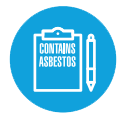
Asbestos Containing Materials
Products Manufactured Using Different Types of Asbestos
There are more than 3000 known products that contain asbestos. The material is or has been used in building construction, automobile construction, mining and a range of industries. In the past roofs, walls and fences have been made from asbestos (then known as fibro). It was also sold in a raw form as ceiling insulation under the guise of Mr Fluffy Asbestos Insulation in, and around the ACT, and parts of NSW. Since the 1st of January 2004 the use of all forms of asbestos has been banned in Australia, but it is still used in manufacturing in many other countries.
Asbestos containing products can be found in either friable or non-friable form. These products are also known as asbestos-containing material.
Friable (loose or soft bonded) asbestos
Friable asbestos products are generally quite loose and, when dry, can be crumbled into fine material or dust with very light pressure, such as crushing with your hand. These products usually contain high levels of asbestos (up to 100% in some cases), which is loosely held in the product so that the asbestos fibres are easily released into the air.
If disturbed, friable asbestos products are dangerous because the asbestos fibres can get into the air very easily, and may be inhaled by people living or working in the area.
Bonded asbestos products that have been broken, damaged or badly weathered (including hail damage), may also become friable.
Exposure to any friable asbestos product is considered very unsafe. Friable asbestos is extremely dangerous and may only legally be handled by a licensed asbestos removalist!
As a general rule – If the asbestos containing material can be easily disturbed and become air borne – by the effect of a breeze or simply creating a breeze by walking past it – it is considered to be in a friable state.
When and where were friable asbestos products used?
Friable asbestos products have been commonly used in commercial and industrial settings since the late 1800’s for fireproofing, soundproofing and insulation. Some friable products were also used in houses and may still be found in houses built before 1990.
Examples of friable asbestos-containing material may include:
- Pipe lagging
- Boiler insulation
- Fire retardant material on steel work
- Sprayed insulation
Non-friable (hard-bonded)) asbestos
Over 97% of the asbestos products used in Australia was non-friable material in which the asbestos fibres were bonded by cement, vinyl, resin or other similar material.
Bonded asbestos products are made from a bonding compound (such as cement) mixed with a small proportion (usually less than 15%) of asbestos. Bonded asbestos products are solid, rigid and nonfriable, and cannot be crumbled, pulverised or reduced to powder by hand pressure. The asbestos fibres are tightly bound in the product and are not normally released into the air.
Common names for bonded asbestos products are ‘fibro’, ‘asbestos cement’ and ‘AC sheeting’.
When they’re in good condition, bonded asbestos products do not normally release any asbestos fibres into the air. They are considered a very low risk for people who are in contact with them, as long as appropriate safety precautions are used when they are disturbed.
However, when bonded asbestos products are broken, damaged or badly weathered (including hail damage), areas or exposed parts may become friable.
Examples of non-friable asbestos containing material may include:
- Asbestos cement sheet
- Asbestos cement moulded products
- Bitumen-based water proofing
- Vinyl floor tile
Over time, some non-friable material may become friable.
Examples of non-friable asbestos containing material may include:
- Asbestos cement sheeting that has been crushed
- Asbestos cement sheeting that has deteriorated from long-term exposure to a chemical mist
- Asbestos cement sheeting that has been crushed
- Asbestos cement sheeting that has deteriorated from long-term exposure to a chemical mist
How do you know if a product or building material contains asbestos?
Asbestos products were/are very versatile, they can be easily moulded, shaped, cut drilled or painted. There is no conclusive on-site testing for the presence of asbestos.
Asbestos products can only conclusively be determined through laboratory testing following sampling.
If you think any building material, a product or an item is asbestos, or contains asbestos – treat it as though it does contain, or is asbestos until proven otherwise through laboratory testing.
Common Asbestos Containing Products and Materials
With over 3000 known different products that contain asbestos, the list is exhaustive, so we have concentrated on the some of the main asbestos containing products and materials you will be likely to find in every day pursuits. Deliberately, we are not trying to educate you on how to determine if something contains asbestos, rather our aim is to guide you to understand asbestos is literally everywhere and you need to involve a trained, qualified, experienced, fully insured licensed person to assess any property before work is done on it. This is particularly important if talking about a
property built before 1990.
Remember: It is impossible to rule out the presence of asbestos by visual examination only, the only conclusive way is by sampling and testing. This information is offered with the aim of helping you: KNOW THE DANGERS OF ASBESTOS AND MANAGE THE RISK.
Many people come into contact with Asbestos Containing Products and Materials on a regular basis – millions of Australian homes and buildings contain Asbestos Containing Products, or are built out of Asbestos Containing Materials.
The majority of bonded asbestos products and materials are safe to be around until they start to deteriorate, are damaged, cut, drilled, sanded or interfered with. When this happens, asbestos fibre/ dust is released, and they become dangerous.
Asbestos was used in the manufacture of building materials in Australia until the late 1980s, when its use in building materials ceased. But its use and importation was not totally banned in Australia until the end of 2003.
It is generally accepted; virtually every building of any description, constructed or renovated prior to 1990 has the possibility of having asbestos containing materials somewhere. However it is possible any building constructed or renovated prior to 2004 may contain products that include asbestos in some form.
Remember – there are in excess of 3000 known asbestos containing products!
Asbestos Cement Building Materials and Products
Asbestos Cement Building Materials and Products are a mixture of cement and sand with asbestos added for strength:
- Asbestos Cement Building Material
The term Asbestos Cement Building Material is used to describe three main forms of building materials manufactured using asbestos cement compounds.
Asbestos Cement Sheet which is often referred to as ‘fibro’ or incorrectly, as just straight ‘asbestos’. It came in various size flat wall sheets or planks (of various finishes). The majority of these materials are generally quite safe, if in situ painted and in good condition. If sealed with
paint, they do not leach toxic fibres or fumes. It is only when damaged or worked on wrongly they become dangerous and toxic asbestos fibres may be released.
Compressed Asbestos Cement Board is thicker and stronger than normal asbestos cement sheet. It was commonly used as flooring (particularly in wet areas), on steps, and as decking on patios and verandahs. It can also be found being used as wall cladding where strength is needed, or where there is heavy pedestrian traffic.
Asbestos Cement Corrugated Roof, Wall and Fence Sheeting was readily available in a number of profiles. It was mainly used with either a profile similar to today’s corrugated metal roofing, which was typically used for domestic roofing and wall cladding, and in a profile called ‘Super
6’, which had very deep corrugations. ‘Super 6’ was also used domestically for roofing, but was mainly used domestically for fencing and commercially for roofing and wall cladding. As with flat asbestos cement sheeting, if painted on both sides and in good condition it is quite safe
unless damaged or sufferers any form of abrasion. Unfortunately the majority of corrugated cement sheeting is not painted and is now breaking down rapidly with the cement bonding releasing asbestos fibres every time it rains or the wind blows. This material is considered in
the highest category for prioritised removal across Australia.
- Asbestos Cement Building Products
These products are generally not as obvious as the materials discussed above. Some of these include: compressed sheet flooring, flues, waste and water pipes, telecom pits, down pipes, guttering, laundry tubs, toilet systems, shower bases, planter boxes, water meter boxes, water pits, vents, moldings (all types and forms) – again the list is almost endless! As with above, if not painted and in good condition it presents a risk that should be negated
Asbestos Containing Building Products
Products specifically used in the building industry that contain asbestos are normally of the bonded nature, where asbestos is used in the production process to give the product increased strength, flexibility or insulating properties. These products can either be be classed as bonded or friable. They can include bonded products such as splash back material, acoustic ceiling tiles, vinyl and ceramic floor tiles, insulation board, carpet underlay, wall and ceiling, vents, cornices and decorative moldings etc; and friable products such as window putty, adhesives, pipe lagging, spray on insulation, etc. Paint is another product that often contained asbestos, particularly in architectural coatings, which were used to give decorative finishes – these often looked like the paint had been troweled on, and gave a swirly effect.
Caution: Due to age, deterioration or the very nature of the product, most bonded asbestos containing building products can easily become friable, and should be treated with care if being removed or having maintenance done on them. Vinyl floor tiles containing asbestos, for example, should not have abrasive buffers used on them; similarly asbestos containing acoustic ceiling tiles should not be cleaned using stiff brooms – in some cases if they are not in sound condition, they should not be cleaned at all. Asbestos containing paints and putties should never be sanded. Abrasive products should never be used on any asbestos containing material or product.
Asbestos Containing Products
Asbestos Containing Products are those that contain asbestos, these can include stoves, heaters, hot water services, boilers, air-conditioners and refrigerators with asbestos insulation, electrical switchboards, pipe insulation lagging; asbestos insulation board used in air-conditioning ductwork, on walls etc. and many more. The asbestos used in these products can be classed as either bonded or friable.
Example List of Areas Where You May Find Asbestos Containg Products and Materials
External Areas:
- Balconies, Verandahs, Decks and Roof Top Areas – Decking/flooring – cement flat sheet (used as a leveler and waterproof covering) and compressed cement (thick) board; ceramic and quarry tiles, adhesives, clues, sealants and waterproof membranes. Ceilings – Insulated ceiling tiles, insulation board, cement sheet (fibro), architectural (textured) paint, sprayed on insulation.
- Concealed areas – external and/or internal wall cavities, etc. Look for things like insulated pipe work that has been run in the cavities between double brick walls and through framework between inner and outer wall cladding, and also for steel structural beams, etc. that have been
sprayed with fire retardant. - Debris – (particularly broken up asbestos cement products and materials) – on the ground, buried,
under and around buildings, almost anywhere - Eaves – cement sheet (often will have visible air vent holes or slots cut in it); insulation board (normally high grade asbestos content) has also been known to be used as soffit or eave lining material; preformed molded air vents, etc.
- Fences – Corrugated ‘super 6’ paneling in freestanding fences, cement sheet, compressed
cement ‘thick’ board and shallow profile corrugated cement sheet used as in-fill in framed fences. - Fire Safety – Walls and doors could contain asbestos insulation board or other asbestos material. Likewise, windows could contain asbestos fire-proofing coatings.
- Garden – Planter boxes and the like, sullage pits, water meter and tap covers.
- Out Buildings – Wall cladding, roofing and doors
- Pipes – Drinking; storm water; sullage and sewage; irrigation etc.
- Pipe Lagging – Heating, gas and air-conditioning – can also be internal.
- Plaster/cement chasing or insulation used around water pipes, etc. – Particularly around hot water and air-conditioning pipes running in channels gouged, or cut into solid brick, concrete or plaster walls.
- Roof Areas – Corrugated cement roof sheeting; tiles; shingles; roof ridge; fascia; adhesives; sealants; waterproof membranes and flue pipes.
- Services – Electrical switchboards, fuses and connections; gas meters; telecommunication, gas and water meter pits, covers and fittings; airconditioning and heating units, ductwork, hot water services and boilers.
- Steel work – Exposed and contained in situ often was sprayed in asbestos containing insulating, fire retarding or corrosive protective material.
- Walls – Flat sheet and planks (weatherboard replacement); compressed cement (thick) board; corrugated – both round and flat profile; and imitation brick cladding; window and door in-fills; capping; cover strips and insulation board; architectural (textured) paint; preformed molded vents and decorative moldings (generally cement based); etc.
- Window Areas – Putty, sealants, coatings; etc.
Internal Areas:
- Adhesives, putties, sealants etc. – Used for securing ceramic and vinyl tiles, sealing windows, pipe work; etc.
- Ceilings – Insulated ceiling tiles, insulation board, cement sheet (fibro), architectural (textured) paint, sprayed on insulation; preformed molded air vents, cornices and decorative moldings (normally plaster based, but could be cement based as well); etc.
- Ceiling cavities – Insulation (loose and sprayed on), cement sheet, compressed cement (thick) board, hot water services, boilers, air-conditioners, ductwork, flues, pipes, lagging, electrical wiring, insulation and debris.
- Fire Places – Surrounds, bases, bricks and tiles.
- Fire Proof – Doors, safes and filing cabinets.
- Fire Safety – Walls and doors could contain fire-proofing asbestos insulation board or other asbestos material; likewise, windows could contain asbestos fire-proofing coatings.
- Flooring – Cement flat sheet (used as leveler and waterproof covering) and compressed cement (thick) board; ceramic, vinyl, and quarry tiles, linoleum, carpet underlay, adhesives, clues, sealants and waterproof membranes.
- Household appliances and fittings – stoves, heaters, light fittings.
- Services – Electrical wiring; switchboards; wood & electric heaters; stoves; hot water services; air-conditioners; ductwork etc.
- Wall – cement sheet cladding; tiles; splash back material; adhesives; spray on insulation; plastering and architectural paint compounds; preformed molded air vents, and decorative moldings; etc.
- Wet areas – Toilet and flushing systems; urinals; shower bases; laundry tubs; walls; ceilings; and backing behind wall tiles and under floor tiles and coverings in the: Bathroom – Kitchen – Laundry – Toilet – Ensuite.
Workplace Asbestos Products and Materials
- Break shoes, linings and pads
- Cooling towers; and air-conditioning, heating and boiler systems
- Exhaust and silencer systems
- Fire surrounds
- Floor penetrations
- Gaskets
- Pipework
- Roof – Bituminous membrane
- Sealants
- Sprayed asbestos; insulation, fireproofing and sound deadening material
- Tools and Equipment – Many types of tools and equipment contained asbestos, particularly those that are powered, such as; electric drills, motors etc; motorised power equipment etc.
Asbestos Containing Products
- Asbestos cement (thin) flat sheet (commonly known as ‘fibro’) and planks (commonly called ‘Hardie Plank’) used for interior and exterior wall and ceiling cladding and to line eaves. It was also extensively used as waterproof paneling under floor tiles/linoleum and behind wall tiles in wet areas, kitchens, bathroom, laundries and toilets. It was also used as below and above ground level waterproof barrier material.
- Asbestos cement compressed (known as ‘thick’) sheet commonly used as outdoor walkway material, such as on verandah decks and steps, can also be found in bathrooms and even used to manufacture outside seats. It is very hard, strong, and heavy; and about 2cm thick.
- Asbestos cement; corrugated roof sheeting; guttering and downpipes; roof ridge; fascia; wall capping; cover stripping; and flat profile corrugated wall cladding.
- Asbestos cement corrugated material was used as wall cladding and roofing on industrial and commercial type buildings, houses garages, cubby houses, tool sheds, chook houses and as fencing.
- Asbestos cement flues used on heaters, boiler, stoves etc. These can be found in the house above heater and hot water services; in ceiling cavities; and outside running up walls and above the roof.
- Asbestos containing floor, wall, and roof tiles; insulation board and ceiling tiles; floor linoleum and imitation brick cladding.
- Asbestos containing cement drinking water, storm water, sewage and irrigation piping.
- Coloured waterproof wall cladding with a smooth finish, much like modern day laminex, used as splash backs in kitchen, bathrooms and laundries; and commonly found as decorative wall paneling above baths and in shower cubicles – it was generally screwed on using countersunk screws and washers
- Garden products, such as asbestos cement planter boxes etc.
- Telecommunication and water meter pits commonly seen outside many homes in the nature strip and in gardens may be made out of Asbestos Cement Material (ACM) – in 2013 Telstra estimated there were in excess of 3 million telecommunication pits made from ACM in Australia!
- Wall and ceiling (both indoor and outdoor) preformed air vents; cornices and decorative moldings.
Friable (loose) asbestos products:
- Friable (loose) asbestos insulation wrapped around gas and hot water pipe work; in and around hot water services; and inside gas, wood and electric stoves.
- Gaskets in all types of stoves and heaters
- Insulation in ceiling spaces – most commonly found in the Canberra and surrounding regions, in houses built before 1980 – known as Mr Fluffy Asbestos Insulation.
- Asbestos impregnated hessian carpet underlay.
Friable and non-friable asbestos in electrical switchboards – Yes, the list is almost endless!


